The Southeast Asia is a backpacker’s paradise. Backpacking was invented for Asia particularly because it simply rectifies the essence of backpacking culture of a low-cost, independent, international travel. Southeast Asia could be the ideal place to spend a holiday from university for more reasons than one, and if you bother to ask, money-wise, yes. Except for the Banana Pancake Trail, the traveller will find in almost any place off-the-beaten paths and hundreds of options to personalize and customize the travel experience. And if you’ve picked Southeast Asia as your gap-packer destination right now, you are in the right state of mind, because if it’s raw and authentic backpacking you want, this is where you need to be. You may not need your Lonely Planet Guide, you’ll see.
1. VISA-vis: visa reminders
Very important! Southeast Asia is definitely one of the most backpacker-friendly destinations for the inexperienced traveller mainly because of cost, proximity of the countries, and, hey, entry is not such a complex thing either. For U.S. citizens, countries in SEA can and will be traversed without the necessity for visas for a certain period of time like Malaysia -90 days, Singapore-30 days, Thailand – 30 days, and Philippines – 21 days. For Laos, Cambodia, and Indonesia, visas-on-arrival are issued in the airport without hassle for fees no more than US$50 depending, of course, on your planned length of stay.
Most backpackers commence their SEA journey in BANGKOK, which, along with MANILA, are strategic places where the traveller can apply for visas to anywhere in the Southeast Asia. Some prefer a business visa that does make travel easier because of its stretched validity and multiple entry access, which is good for a year’s worth of stay in SEA. But leave this for the seasoned backpacker. For a two month stint, a tourist visa will work super fine.
Visa regulations are recurrently updated depending on foreign and political situations, so watch out for extra requirements like exchanging at least US$300 to MMK in Burma. But don’t be intimidated. Check the State Department website for up-to-date information on visa and travel, or, when all else fails, seek advice from a credible travel agency such as Liberty Travel.
2. SURE TRAVEL: Insurance policy coverage
The SEA region remains entirely unpredictable when it comes to health and property theft incidences. Hence, as a student, you may want to organize and purchase a comprehensive travel insurance and screen what circumstances are covered and not covered by the policy, like medical evacuation. Save for Thailand and Manila, a big bulk of hospitals in the SEA is not equipped for anything beyond First Aid remedies. It may get quite ugly, say, when an accident happens while tubing in Vang Vieng, and even uglier when your medical coverage, you find, cannot accommodate evacuation to Bangkok or does not extend to accidents from “extreme sports”.
These are decisions that matter, decisions that can save your life. So talk with your insurance provider, know the limits, keep receipts of your valuables, and make copies of your insurance policy to leave at home. When the inevitable does happen, don’t forget to file and acquire a copy of the police reports, and always make accessible your insurance provider’s 24-hour emergency number accordingly before paying for whatever medical services.
3. FARE WELL: Airfare deals
When that’s set, plan for your air transport. You’d want to get the best deal without compromising comfort. Not to be too patronizing, but a 12-hour flight to a faraway land and the entertainment system breaks down on you is outright injustice. Go for an airline with a “decent” track record. But before finalizing your booking, check your agent or airline representative for special offers when booking before purchasing your ticket
Some airlines have an “ALL ASIA PASS” like CX or “ASEAN PASS” like Thai Airways and Malaysian Airlines. Cathay’s All Asia Pass is a roundtrip promo available for U.S. residents flying from L.A., San Francisco, or New York to Hong Kong then to at least 2 basic cities of your choice. Prices are subject to change, but the figures for 2010 travel begin at US$ 1599, inclusive of the roundtrip USA fare. Even better, is Thai Air’s ASEAN PASS which I heard go by a coupon per flight which have incredible cut-rate prices which go as low as US$99 for each coupon (minimum of 3 and maximum of 6 coupons). MAS’ ASEAN PASS is good for 4 flights to Southeast Asian major cities for a charming price of US$322.
For these, you will need them issued at the same time as your international flight ticket, so planning is of the essence. Check www.cathayusa.com or www.thaiar.com for details and updates.
4. BOOK your NOOK: Lodging reservations
You know, after hours on end of air and road travel, to be able to check in and shower in your selected hotel accommodation is perfect bliss. But for other parts of the trip, booking hotels or hostels is less than necessary. Tourism is a huge economy generator, lest you didn’t know. That Southeast Asia is improving on backpack travel infrastructures is only to the traveller’s advantage just because s/he will almost never run out of hotels. Also, it is a great advocacy to help independent or family-owned hotels to make sure you’re helping sustainable tourism in the country and directly benefit local economic development.
While you’re at it, you can also research and book tours that contribute to preservation of culture and endangered wildlife in the area, such as the elephant camps in Chiang Mai. Animal rights activists fight for elephants which are made to wear painful wood in their backs to carry tourists for hours in the jungle. These cuts through the pachyderms and is a truly distressing truth. By a small act of choosing tours, like elephant camps that offer elephant-back safari, you are ensuring that cultures and wildlife will subsist until your next time here.
5. PICK your PACK: The right pack
Backpacks are essential, need I say? Having taken care of the more important things, it’s high time to freak about your pack, and I say that in a good way. There are many good choices for packs these days but the operative word is comfort, as it has been throughout the article. Right size, zip-around, compartments, chimney, and straps – these are what you want in your pack. Zip-around versus top loading is self-explanatory (no more digging everything out). Internal and external compartments offer great organization. Chimneys will create ventilation between man and pack, so definitely no flat backs, please. Straps for securing the pack in place as lug this around. Finally, the right size also means making sure the pack and its would-be contents stays within the carry-on limit.
(Pick a sturdy and reliable set of shoes for trekking as well!)
6. HAPPY PACKING
Never shall I more happily stress this… pack light, pack well. This is the code of the backpacker. No matter how big your bag, there will always be a way to fill it with crap. (Yeah, take that laptop out.)So, understand your destination – SEA. The basics would cover a first aid kit, travel size toiletries, a sweater or a sarong, trekking shoes, passport (photocopies and photos for visa apps), USD currency and yourself.
Laptops and other expensive e-gadgets are quite risky due to theft and damage concerns, rather bulky too. Keep your techie luggage to cameras and mobile phones. Anyway, the region teems with internet shops, while hotels are mostly Wi-Fi ready. Make sure your backpack is half empty when you come here to save space for your shopping. Keep that first aid kit. With the poor medical facilities in some rural areas, this might just save your life.
Save for…
The amazing thing is that all your modern comfort needs are here, authentic and cheaper. Toiletries are manufactured in Thailand and Philippines like J&J and Colgate. The sarong, which you can also choose to buy here, is handy as a makeshift blanket for the cold nights or as a shoulder/leg cover-up for those solemn temple visits. Thongs or flip flops which come cheap in SEA (less than US$1) are also necessary for that city trek and for bathroom use when things aren’t looking that nice and clean. Don’t forget that dear Southeast Asia is a shopper’s discount haven for counterfeit, original, and all brands. In fact, you can also buy a cheap tri- or quad-band mobile here with a local SIM for $50 less to stay connected.
***
The real deal in backpacking is freedom and the ability to choose. The ultimate advice to date is to be highly adaptable and flexible to situations. Seriously, Southeast Asia is the place for “Tenner-A-Day” student travellers. Daily budget: $10-$20, not including shopping.
Weigh your options when a risky but fun opportunity comes along, and simply SIMPLY (I mean really) avoid messing with drug policies, not just in Southeast Asia. Tourist or local, drug violations render unmerciful sanctions for being caught dabbling whilst in Southeast Asia. In some countries, it could be a choice between jail time, deportation, life sentence, or the best of all, death penalty.
Delays and cancellations can be an amazing thing too, so keep cool and go with it. Should you get lost, what can I say? That’s the whole point! This will be an exciting trip!
Josh Boorman
Editor-in-chief
Backpacking Addictz
Twitter: @backpackaddictz
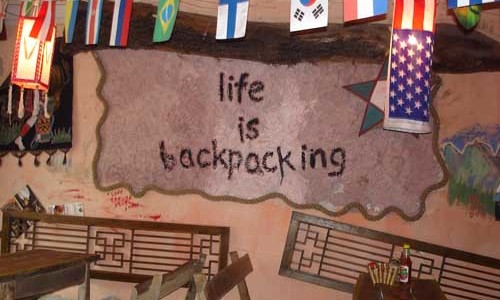
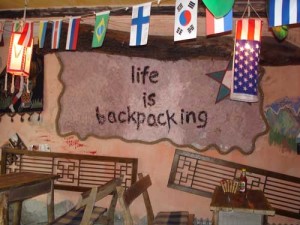

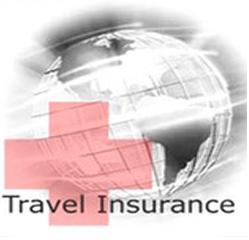


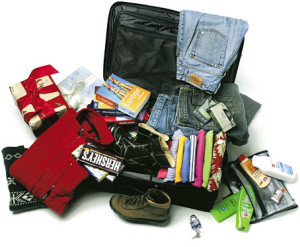

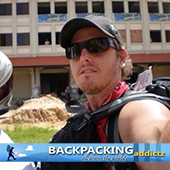


Leave A Response